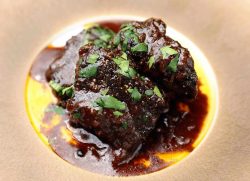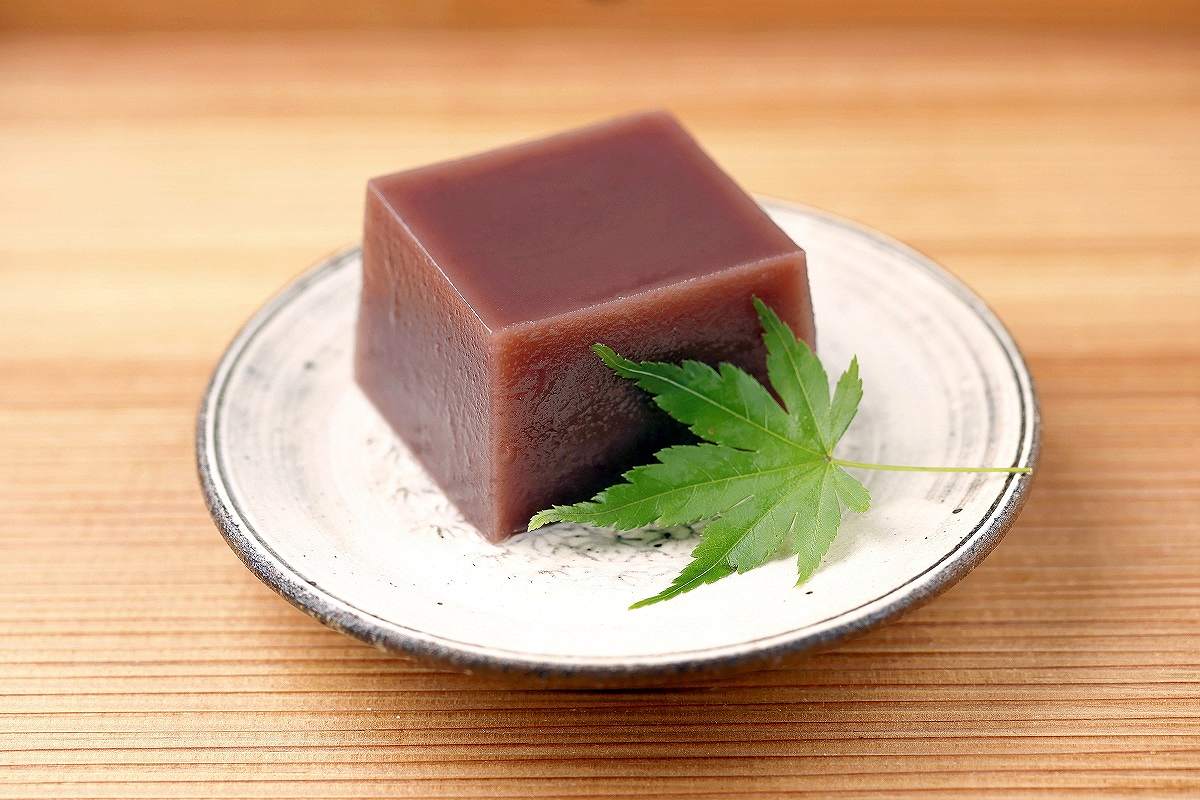
Mizu yokan
1:00 JST, September 9, 2024
A succession of hot summer days can make you crave a treat that goes down easily. Kanako Wakimoto, who runs a traditional Japanese restaurant in Kamiyacho, Tokyo, recommends mizu yokan — a red bean paste sweet served chilled. It can cool you down, so is a perfect summertime snack.
At Wakimoto’s restaurant, the desserts that customers can choose to finish off a course dinner are very popular. Mizu yokan, which contains more moisture than regular yokan, is one of the desserts offered during the summer.
“It’s seasonal and easy to make. You can make it with children, too,” Wakimoto said.
Usually, koshian (fully pureed smooth azuki red bean paste with skins removed) is used to make mizu yokan, but Wakimoto uses boiled azuki beans with the skin included, which she says give a richer flavor. Azuki beans are cooked from scratch at her restaurant, but this time she agreed to use store-bought boiled azuki beans. The sweetness of such products can vary, so she chooses an unsweetened one.
“The most important thing in making sweets is measuring the ingredients precisely,” Wakimoto said.
It is helpful to use a scale that can weigh food in 0.1 gram units when you weigh the agar-agar powder. The amount needed is 1 gram, but weighing it exactly helps prevent the mixture of azuki beans, sugar and agar-agar powder from becoming too hard.
Once pureed in a blender, the mixture should be moved to a pan on high heat. Stir it constantly so that it won’t get charred until it reaches boiling point, when it gains a sheen on the outside.
Move the mixture to a bowl for weighing. If it weighs less than 340 grams, add some water so that it becomes exactly 340 grams. If it weighs more than 340 grams, heat it again. This extra step gives you the same result even if there is a variation between the moisture in the beans and the amount of water that evaporates.
Before putting the mixture in a refrigerator, chill it in the bowl over another bowl filled with ice cubes and stir it until it is cooled down. By doing so, the water and the other ingredients become evenly mixed and set.
Pour the mixture in a rectangular metal tin and put it in the fridge to complete the process. If you don’t have such a tin, you can use any other container instead.
This mizu yokan is not too sweet and has a nice azuki bean flavor that fills your mouth as you eat it. You may feel as if your body temperature has lowered after eating it. It will definitely help you overcome the scorching summer heat.
Mizu yokan
Ingredients (for a tin measuring 8cm x 12cm x 4cm):
- 120 grams boiled azuki beans (unsweetened)
- 90 grams castor sugar (or any sugar of your liking)
- 1 gram agar-agar powder
-
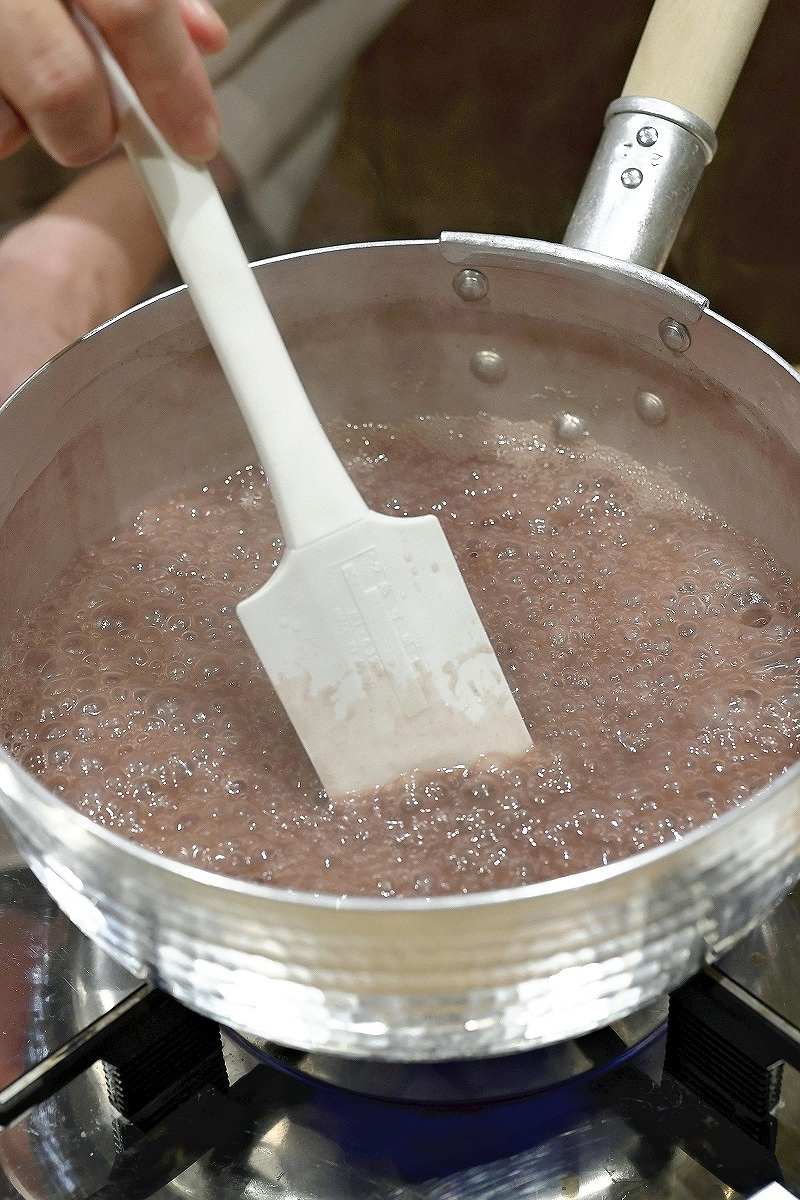
The Yomiuri Shimbun
Heat the mixture in a pan at strong heat. -
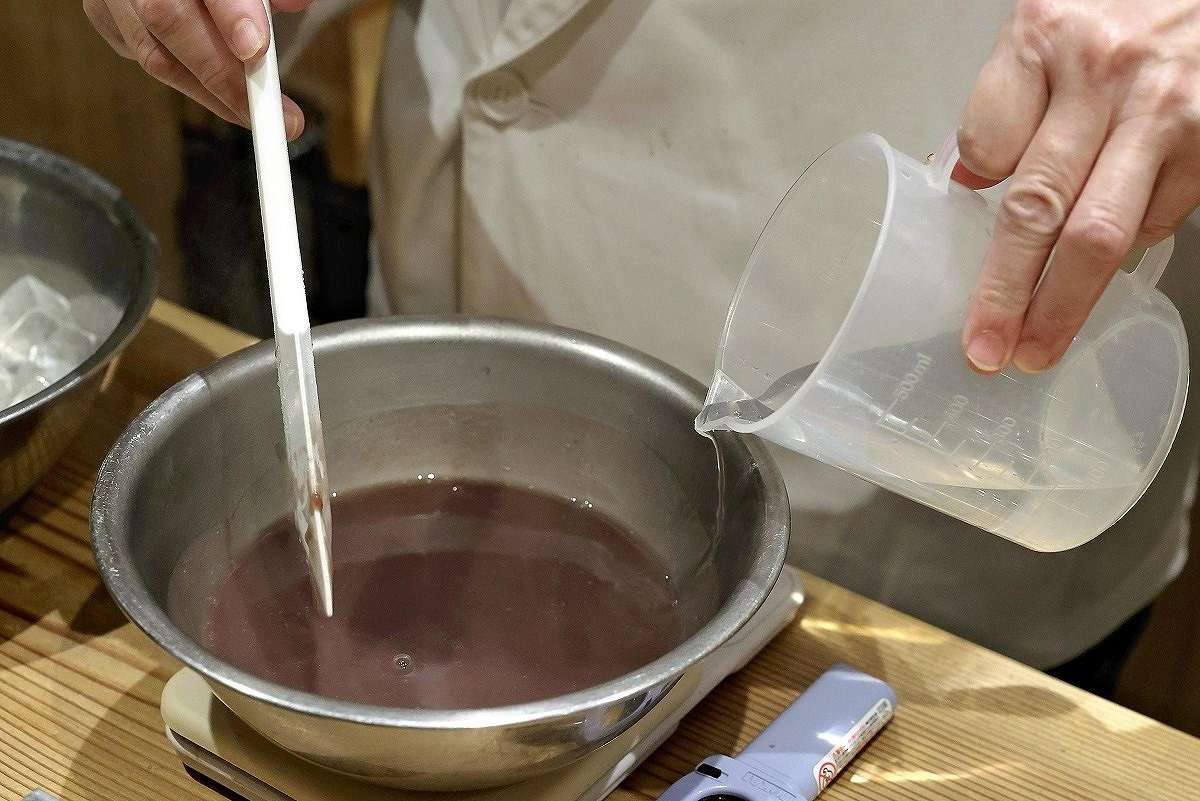
The Yomiuri Shimbun
Weigh the mixture in a bowl. -

The Yomiuri Shimbun
Put the mixture in a rectangular tin for cooling. 


Directions:
1. Put boiled azuki beans, castor sugar, agar-agar powder and 200 milliliters of water in a blender. Blend until even and smooth.
2. Put the mixture in a pan and heat at strong heat. Stir the mixture constantly with a wooden spatula, bring it to a boil and heat it until it gains a sheen.
3. Put the mixture in a bowl or another container and weigh it. Adjust the weight to 340 grams by adding water or heating it again.
4. Chill the mixture in the bowl over another bowl filled with ice cubes. Stir the mixture. When the mixture thickens and become heavy to stir, put it in a rectangular tin or other container.
5. If a tin is used, pat the bottom lightly to remove extra air. Put the tin or container in a refrigerator.
6. Take out the mizu yokan from the fridge and slice to an appropriate size. Serve on a plate adorned with a leaf.
***
Boiling beans enhances flavor
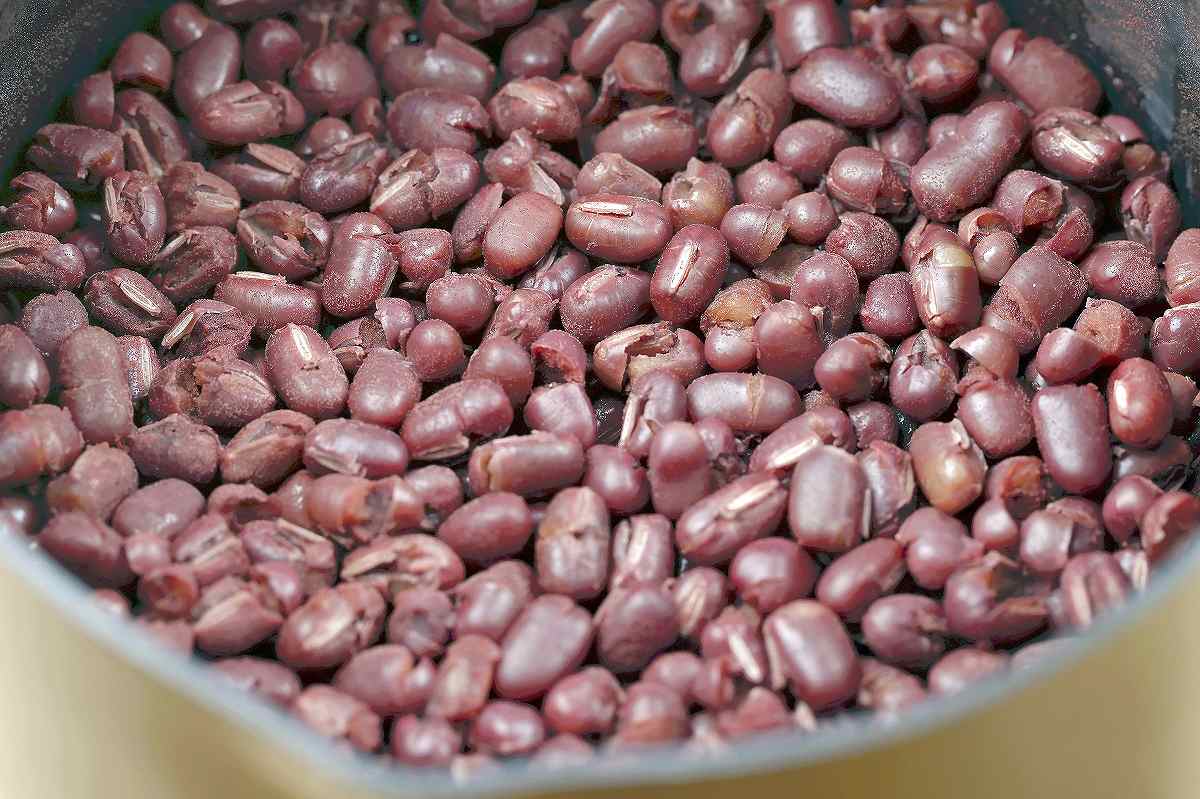
Boiled azuki beans
If you have the time, why don’t you boil the azuki beans yourself?
Put azuki and plenty of water in a pot. Bring to the boil, then lower the heat and cover with a lid. If the water used for boiling tastes bitter, drain the water, pour new water and heat again.
Heat the beans slowly for 90 to 120 minutes while removing foam and adding some more water to the pot if necessary. Boil until the beans become soft.
“Boiling the beans creates a richer flavor, so please take up the challenge,” Wakimoto said.
"Features" POPULAR ARTICLE
-
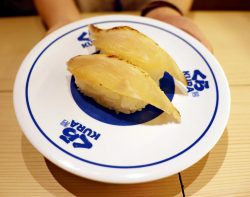
Pangasius Catfish Increasingly Featured on Japanese Restaurant Menus, Home Dining Tables Due to Affordability, Mild Flavor
-

Sumo Restaurant in Tokyo Teaches Foreign Visitors About the Ancient Sport, with Bouts Between Retired Rikishi
-

Autonomous Passenger Ship Connects Mainland with Remote Island in Seto Inland Sea; World’s 1st Commercially Operated Autonomous Vessel
-

Japanese Chef of Italian Restaurant in Tokyo Offers Milanese Risotto; Bright Colors, Rich Flavors in Simple Steps
-

Hokkaido Village Attracts Visitors with Red-crowned Cranes, National Special Natural Monument
JN ACCESS RANKING
-

Japan Govt Adopts Measures to Curb Mega Solar Power Plant Projects Amid Environmental Concerns
-

Core Inflation in Tokyo Slows in December but Stays above BOJ Target
-

Major Japan Firms’ Average Winter Bonus Tops ¥1 Mil.
-

Tokyo Zoo Wolf Believed to Have Used Vegetation Growing on Wall to Climb, Escape; Animal Living Happily after Recapture
-

Univ. in Japan, Tokyo-Based Startup to Develop Satellite for Disaster Prevention Measures, Bears


